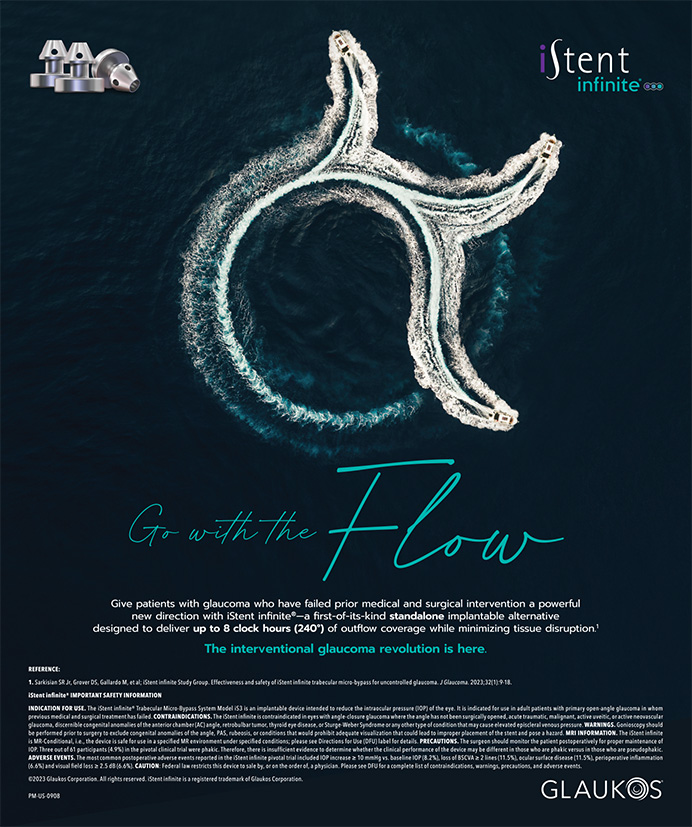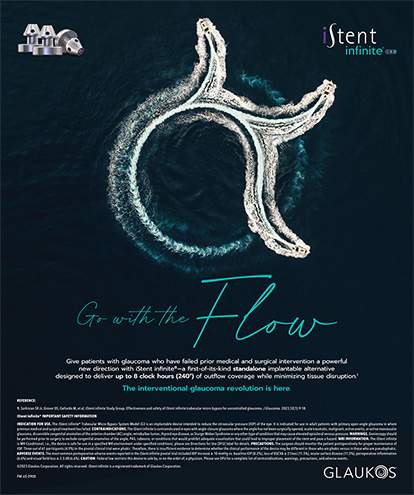Advances in laser technology for cataract surgery are enabling me to perform with greater confidence and accuracy surgical procedures that I once considered very risky. I now anticipate excellent outcomes in patients for whom I once expected longer recoveries and a higher incidence of intraoperative problems. In addition, I find the surgeries less physicially taxing to perform. This article provides a case example.
CASE PRESENTATION
An 85-year-old, monocular man presented with a red, hypermature cataract in his right eye. On a prior examination, the patient had a distance UCVA of 20/50 and a near UCVA of 20/50 in that eye. Now, he only had count fingers vision at 2 feet due to the hypermature cataract.
The patient reported that he had undergone cataract surgery on his left eye 4 years earlier by another doctor. Complications had ensued from a retained nuclear lens fragment, and additional surgery was performed a month later to remove the fragment. The patient stated that he had developed secondary glaucoma as a result of an IOL “infection” that left him blind in his left eye. He was very anxious about having surgery on his only sighted eye.
THE CHALLENGE
As protein denatures in the lens, it tends to turn brown. Left in the eye, the proteins continue to denature, changing the lens’ color to red, black, or white. This condition is irreversible, except with surgery, despite recent social media claims to the contrary. The density and opacity of many hypermature cataracts often obstruct visualization of the anterior capsule, and the peripheral nucleus tends to be leathery and hard to crack or chop. In addition, these eyes often exhibit intraoperative floppy iris syndrome and endothelial issues.
In this case, it was imperative to protect—and ideally improve—the vision in the patient’s sighted eye. I performed the capsular opening and nuclear fragmentation with a femtosecond laser (Catalys Precision Laser System; Abbott Medical Optics). In my opinion, laser cataract surgery is more precise than conventional cataract surgery, and I find that the unique capabilities of this particular system offer a high level of safety.
In my experience, a laser’s ability to create a perfectly shaped anterior capsulorhexis is invaluable when dealing with hypermature lenses: the intact, circular capsular opening makes the rest of the surgery safer and easier. Hypermature lenses increase the risk of a torn anterior capsule during a manual capsulorhexis. In addition, I rarely need to use capsular dye.
In my experience, the Catalys is able to fragment even the densest nuclei in a grid pattern. I find this fragmentation pattern highly advantageous for several reasons. First, it reduces phaco time. Less ultrasound energy is required to crack and remove the nucleus, thereby decreasing the risk of endothelial damage and postoperative inflammation. Second, in my hands, the grid pattern prevents clogging of the phaco tip during nuclear removal, which reduces procedural time and avoids trauma to the eye caused by excessive maneuvering of the cataract. Third, the air that is released pneumo-dissects the lens, generally making hydrodissection unnecessary and helping to protect the capsular bag.
I appreciate that treatment with the Catalys only raises IOP by 10 mm Hg.1,2 This is confirmed by the fact that no patient has had his or her vision dim during the procedure. Other safety features of the system that I value are the automatic setting of the anterior and posterior boundaries of the lens treatment and the automatic compensation for lens tilt. I believe that both make inadvertently cutting the anterior or posterior capsule almost impossible.
OUTCOME
After the laser portion of cataract surgery, the patient was transferred to the OR for phacoemulsification and IOL insertion. I easily cracked the lens into quadrants, and with much less phaco energy than would be required during traditional cataract surgery, I removed the cataractous material. Then, I implanted a +20.50 D ZCB00 lens (Abbott Medical Optics).
The patient achieved a postoperative distance UCVA of 20/20 and near UCVA of 20/40. He is very pleased with the outcome.
Johnny L. Gayton, MD, is in private practice at Gayton Health Centre in Warner Robins, Georgia. He is a speaker for and consultant to Abbott Medical Optics. Dr. Gayton may be reached at (478) 923-5872.
- Schultz TM, Conrad-Hengerer I, Hengerer FH, Dick HB. Intraocular pressure variation during femtosecond laser-assisted cataract surgery using a fluid-filled interface. J Cataract Refract Surg. 2013;39:22-27.
- Kerr NM, Abell RG, Vote BJ, Toh TY. Intraocular pressure during femtosecond laser pretreatment of cataract. J Cataract Refract Surg. 2013;39(3):339-342.


